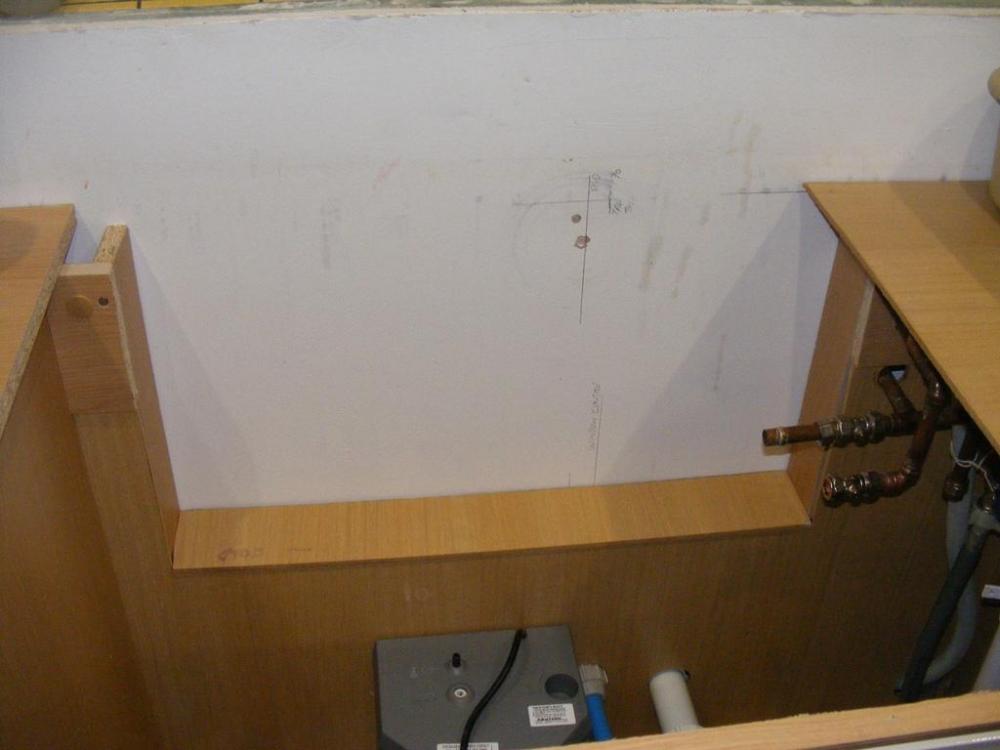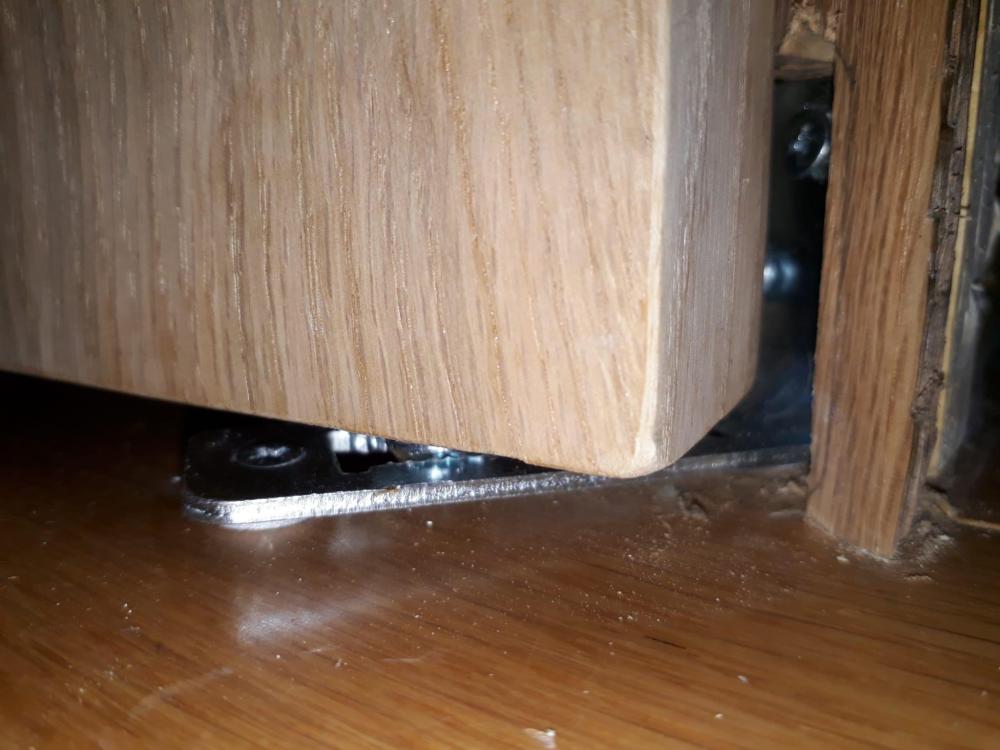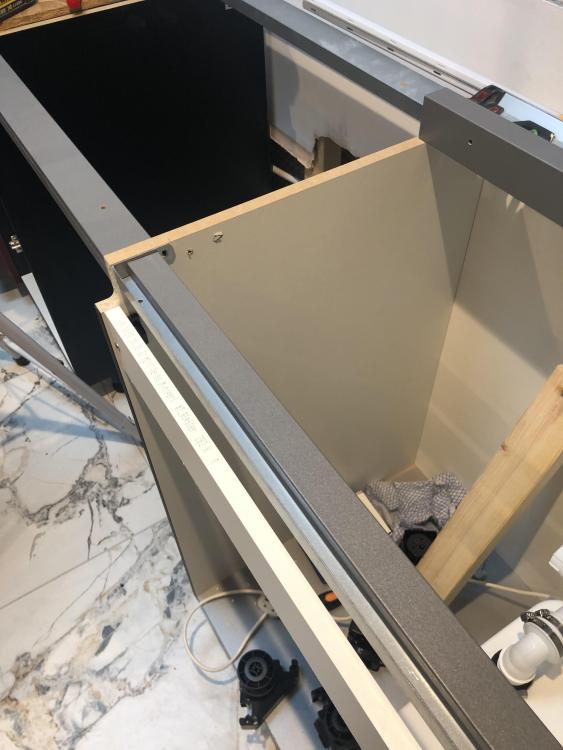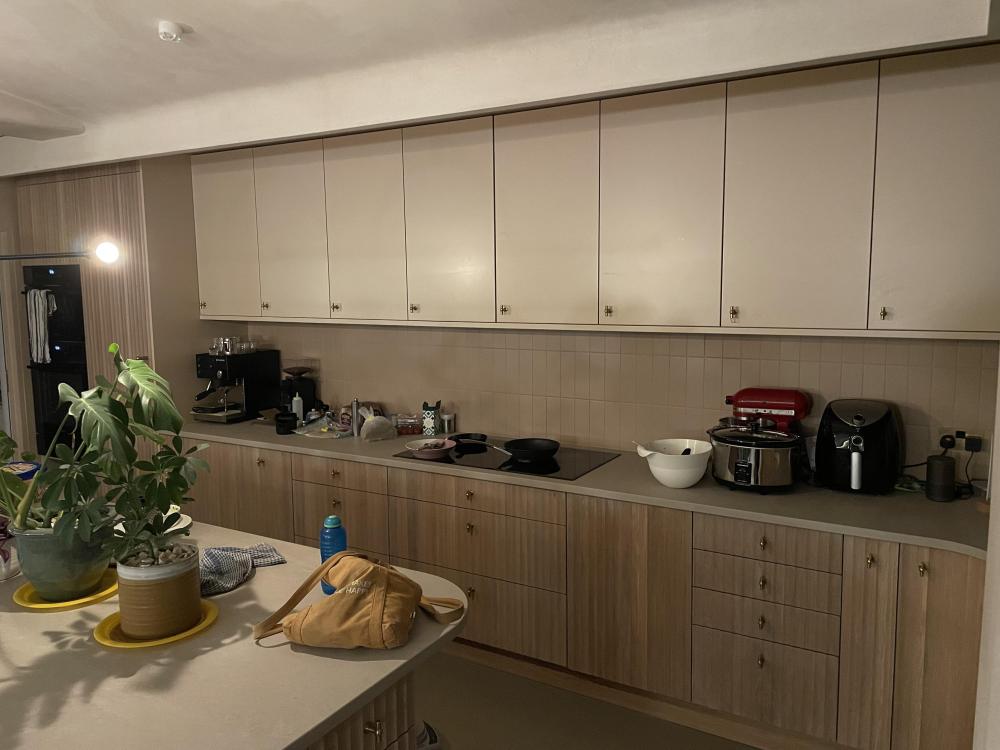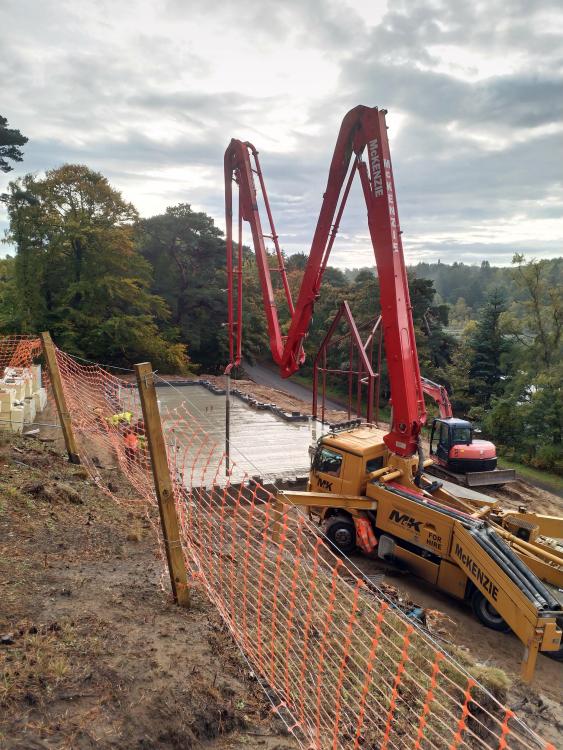Leaderboard
Popular Content
Showing content with the highest reputation on 11/24/23 in all areas
-
See why the UK's heat pump market struggles while other countries succeed: https://www.theguardian.com/environment/2023/nov/23/norway-heat-pumps-cold-heating3 points
-
As long as there are no caviats in it , case closed m,lud, tell him to sue you 🖕I am sure those of us that have been self employed have underestimated a job or two and had to learn from our mistake by sucking it up, he’s just chancing his luck.3 points
-
Some of the claims in that link are pretty doubtful though. Afinia aluminium radiators are more efficient than traditional radiator materials, such as steel and cast iron Incredibly effective thermal conductors and with low energy consumption, Afinia radiators can help lower energy bills The range can deliver exceptional room comfort, heating up and cooling down very quickly which allows Afinia radiators to respond quickly to any changes in the temperature demand set by the thermostat Except for heat lost from the back via an external wall (which will not vary a great deal) all radiators are 100% efficient in terms of the heat getting from the pipework into the room. The radiators themselves do not and cannot have any intrinsic "energy consumption", low or otherwise. (Even with fan-assisted radiators the motor power ends up in the room.) Claims about warm-up time are I think illusory, the thermal mass of the metalwork is small compared with the water content and very small compared with the room itself. All the usual misleading advertising guff IMO.3 points
-
One sentence sums it up. "The Norwegians also benefit from well insulated houses" Which brings the conversation back to what do we do with the millions or poorly insulated houses in the UK. Our traditional answer when energy was cheap was just pump loads of heat into them as fast as it leaks out.3 points
-
I believe it has, and would have messaged had I not seen it said already. Neither do you need permission to start work, but may be made to demolish again. I suggest a letter to the planning officer, explaining the circumstances and requesting being advised at all stages. Sending by special delivery gets you proof of receipt, or hand the letter over to reception and get a receipt.3 points
-
This is not really an introduction, but I didn't formally introduce myself when I got into buildhub more than a year ago. Work is basically done, and it's now official: my place has gone from having an energy rating of F to having an energy rating of B! In particular, this counts as "bâtiment basse consommation en rénovation". French energy rating is insanely hard; of the roughly sixty places I visited when I was buying, only two had a B - one was new, and the other one had town heating (still a rarity) due to being next to an incinerator. This is just to say that I am very, very grateful to everybody who helped here. I don't know what I would have done otherwise. The diagnostician's only recommendations are: - to install MVHR (not sure that's feasible in a house from 1930?) - to check on airtightness (I'll borrow a thermal imagining camera once it gets seriously cold - is there anything else I should do?). When asked, he also said that installing solar panels and hooking them up to hot water generation could be interesting. (Local peculiarities: it's sunny only in summer, and it is no longer possible to sell excess electricity back to the State.) Thank you again!2 points
-
I heard Herr Bosch on the radio once. He explained that diy drills will only ever be used for, say, 4 hours actual operation, and are built to suit. You get precisely what you pay for. I have a new £30 Bosch drill just for small jobs. It struggles with heavy drilling but it's light and not too big. I have a very old, quite expensive one, shaped like a machine gun. The motor whirrs yet the power is stunning, but its a bit heavy. All my dewalt is smooth and efficient. Choose what you need, but don't bd underpowered.2 points
-
3m may be a bit tight but it all depends on the patio furniture. Adding a meter or two would ease that of course but I’d start from what will the patio be made from? Is it slabs/paving of a known size or a timber deck? Ours is constructed from porcelain tiles, each 1200mm long so three of those gives us 3.6 meters and it’s enough to get past the patio furniture when people are sat there and way more than enough to get past when people aren’t sat there - which is most of the time. From your plans it looks like the further you go towards the fence the more ground you’ll have to build up which probably won’t come for free so if I were you I’d work out what your going to use for the patio, work out the size of the furniture and give yourself enough room to get past it when people are sat there but no more.2 points
-
Fook it all off and go and buy a FRANKE tap brace. You will think of me in two years time when your tap is wobbling around like a cock in a sock and think, why didn’t I fit one of those braces like that clever bloke Russell said. Pop around later and bring me beer.2 points
-
Yes but what the people that say it is carbon neutral can't grasp is it you left the trees standing, and generated the electricity instead from wind turbines you would stop sending CO2 up the chimney at DRAX and the trees would be absorbing CO2. Best thing to do with them is leave them standing until you can fell them and make them into something useful that will last a long time keeping that carbon out of the atmosphere. Until the people that plan all this realise this, I have little faith in the plans for net zero actually working even if fully implemented.2 points
-
Insulate them. Not difficult, just needs to be got on with. The question you are really asking is 'who pays'. In all cases it needs to be the property owner. Stop all the grants and incentives and legislate for improvements. Let the market sort itself out, no one is forced to buy a house.2 points
-
No 1, if you are expecting to lay in the cables and then get an electrician to sign it off then find that electrician first and discuss the details with him. Electricians can sign off work partly done by others, but are not obliged to, and many will not entertain that. What cable are you proposing? 2.5mm conduit singles will fit in 20mm conduit okay. If you really want to, 2 lengths of 2.5mm twin and earth will JUST fit if you are careful and keep them flat, no twists. NO chance of a third (lighting) cable in the same conduit if you choose that. Personally I would just run one run of conduit horizontally from socket to socket no tees. And a separate conduit up to the lights. Read up and understand safe zones or agree routing with your chosen electrician.2 points
-
I have the Milwaukee M12 subcompact multi-tool and I'm not very happy with it. My very old Bosch professional version is much better and the Dewalts I've used are too. It may be a different story with the M18 Milwaukee tool.1 point
-
Comparing Dewalt and Milwaukee Is like comparing Ford and Ferrari1 point
-
I always bought tools based on how much use they got, for example drill driver, used the most = buy good quality, multi tool, (I would use not very much) buy cheap. Then again I am old, retired so not likely to have many years to use much. Then again there is the old adage “buy right, buy once” 🤷♂️1 point
-
My dewalt multi tool is faultless. There also fairly cheap if you already have batteries1 point
-
I suspect you have not got the interior warm enough and this is keeping the RH high. So really sure how good Actis multifoil is in reality. How large are the gaps between the ceiling and the roof materials?1 point
-
I would not worry about it. You have been penalised for the gas and not having solar. You will actually have real financial savings in your monthly bills due to the good insulation.1 point
-
ours wasn't. worktop guys came in and siliconed the worktop to it. although they were so quick i didn't even see it happen! but i'm sure there's silicone there. 😆1 point
-
Thanks Ian That is really helpful advice. This is in sevenoaks, kent. The London to Hastings train line goes under the garden. Here is a link to one of the airshafts Airshaft ( not "mine"). If you Google maps tn13 1pb you can see the shaft, and os maps has the tunnel line marked and all the airshafts. I will let you know how I get on.1 point
-
1 point
-
Yes. I know my doors are not as heavy as yours, but I did not put the outer edge screw into the floor straight away, until I was sure the bracket was in the right place and working correctly, and even without that screw into the floor, the bracket seemed stable. So the floor fixing is not doing very much at all and could be perhaps a short screw resin fixed into a tile depth hole?1 point
-
1 point
-
Not really a horror story. Mostly it's because elecricity is approx 3x as expensive as gas, but the CoP of an HP is also in the region of 3x so the cost relative to a gas boiler is down to small differences in the two and may be more or less. Hence the emphasis on running the HP from off-peak electricity as far as practicable. The amount of energy needed is beyond the scope of small domestic battery systems. The situation in Norway is rather different, they have a history of cheap hydroelectric power (dating from before their exploitation of oil and gas fields) so saving 2/3 of consumption by upgrading from resistive heating to heat pumps is a no-brainer. There is also much more use of MVHR which helps.1 point
-
1 point
-
1 point
-
Yes, but you'd have 2 jumpers in each block, one incoming from the prior block, one out going to the next. I used this scheme when I have random CAt6 each with slightly different things going on (often for outside and out buildings, or heating controls etc). When I have >8 CAT6 with a consistent assignment then using interconnected blocks comes into its own. (E.g. for light switches and room sensors, each room being another line)1 point
-
Just to follow on from my earlier comment about my own bifold doors. I fitted them this morning using the supplied pivot pins rather than ordinary hinges. In my case the bottom bracket is an L shaped bracket that fixes to the door jamb and then has a single screw at it's outer end for stability. As i was fixing into oak flooring, I just used a short screw that I knew would not reach through the floor board so no chance of hitting the UFH (which should in any event be missing from this bit of floor)1 point
-
A lot of people mix up efficiency and speed, especially when it comes to heating. It's like saying a Ferrari must be more efficient as it gets you there sooner. Being very generous, you could read it as time efficient. Like, an electric fan heater is very time efficient way to warm up a room; you waste less time waiting for it. But a heatpump will cost less doing it Notwithstanding that, totally agree different metals is complete BS. The one caveat is a badly furred up rad would be less time and money efficient: it is effectively internally insulated so the full heat never really gets out of it so over extended period you waste a lot more heat on the circulation pipework (especially if it goes through cold zones) vs the small amount actually usefully delivered to the room1 point
-
They look worryingly like UK boxes in round rather than the characteristic EU look, I'd worry about the screw hole centers being wrong. Try https://knxshoponline.co.uk/e135-o60mm-extra-shallow-only-35mm-deep/ They have a pretty good range to chose from1 point
-
Correct. The non interconnected block actually have 4 interconnected terminals per signal, 2 facing down and 2 facing up. In most cases you use just 2 of them, the spares are mostly useful if daisy chaining a signal (like Rob does with Tree and power lines. Which mostly comes down to personal preference, if you have the space for it )1 point
-
Is the mould on the exterior north facing, so shaded? Not sure what the other pictures are showing.1 point
-
When you read the report in full you will probably pick up on the fact that the government has been proactive over 50 years in implementing change. They taxed other ways of heating to discourage not using a heat pump. They trained people to install the systems properly. (to avoid bad publicity) They have well insulated properties. Pretty much everything we have not done.1 point
-
When I was looking for a retrofit heat pump I consulted three installation companies. Two employed teams of fitters and promised me a large reduction in my heating bill over my then oil-fired boiler. The other installer was a small company saying my heating bill might be slightly reduced. Since I had done the sums for myself I went with the honest installer and was very pleased that I did because their workmanship and after-sales support were excellent. Unfortunately with the change of fuel prices since then, oil would currently be cheaper.1 point
-
We just need a government that is REALLY committed to get these things sorted and not one pretending. They back tracked on new build insulation standards, they stopped onshore wind, stopped the homes insulation grants, give huge tax incentives to oil companies an EPC almost gives you extra points for going gas. Just makes to wonder.1 point
-
That's another misleading conflation of 2 separate issues. Yes, you want to insulate as well as you can whatever the source of heat. However, it is possible to use a heat pump effectively in an old, leaky building, you just have to design the system correctly. Our house is old in places and not terribly well insulated, but I've installed a heat pump system with a design flow temperature of 35C and it is heating the house perfectly well, with a SCOP so far of 4.36 so cheaper to run than gas even on standard rate electricity. Currently the grid CO2 intensity in our region is 85g/kWh so 20g/kWh of heat energy. Gas is about 180g/kWh, so nearly 10 times the CO2 emissions.1 point
-
The company that is fitting ours doesn’t fit retrospectively now They have been going 25 years and said the majority of retro fits are expecting bills to be significantly reduced which isn’t possible with rads and poor insulation levels We will be happy with similar running costs to our gas boiler He said that's realistic Time will tell I pointed out that BG are guaranteeing a reduction in bills He said that he doesn’t know how that can be possible while electric is so much more expensive than gas1 point
-
Yeah something like that, but because the wall units are only about 33cm deep and the tall units are full depth, they are on different planes, so you hardly notice. In our case, you never notice because they are two additional measures which conceal this: 1) although all the carcasses are from diY kitchens, the base units and tall units are finished in a different finish (oak) to the wall units (painted finish); 2) additionally, that top area is recessed behind a decorative bit of ceiling - difficult to explain but maybe this picture can explain: That ceiling slopes down from the apex of the roof to about 10cm in front of the tall units, above which the ceiling is flat. I really like this sort of our kitchen at it enables us to fit lots of almost concealed downlights as well as creating architectural ambience.1 point
-
Highlight the bit you want answers too and press “quote” or use the “quote” icon under the piece in question. (I asked steamy earlier and await his reply.) having done GRP myself his reply makes sense but not sure what the “cure” is.1 point
-
That said, "designer" radiators often have a lower output than big standard radiators so it's probable you won't get enough heat from the "designer" ones at efficient flow temperatures (typically less than 45C)1 point
-
Pre drill a clearance hole in the first piece(that you are fixing through) then twin fast screws, beware to screw slowly if using a power tool as they pull in fast and use the clutch on your driver…Furniture Chipboard / Twinfast Screws, also known as particleboard screws. These self-tapping screws have a coarse thread with twice the thread pitch of standard wood screws, making it easy to drive them into a variety of materials such as chipboard or various densities of fibreboard.1 point
-
On the white cupboard fit a bottom rail to match the top rail that exists, these then have a 15-18mm gap to the edge of the side panels, glue 15-18mm (whichever it is) timber to the back panel to match the top and bottom ones and you then have up to 36mm to screw into the back panel from the inside of the cupboard through those supports. (I can do you a cad, crayon assisted, drawing if you want 😇)1 point
-
Heat pumps typically run at lower water temperatures than a gas boiler so each radiator will give out less heat. But your existing radiators might be over-specified, they often are, in which case you could be okay with a heat pump. Or you might be able to keep your existing radiators but add some more to achieve the necessary heat output. We added a small low extra radiator in a bathroom to avoid having to replace the towel rail.1 point
-
When was the chart first made? Town gas was phased out in the very early 1970s. And what is a Kw hours. K = Kelvin, the measure of temperature. w = nothing really, but is, when italicised, used, in formulas, for angular speed, in radians per second. You will need a torch as you need to know the external dimensions as well as the internal ones.1 point
-
@thenight you have asked the right questions and indeed received the right answers/advice from folk with some great knowledge and experience. I’m overall very happy with my ASHP, and the grants and funding I receive for it. But in the context of it being installed and integrated in a highly insulated self build, and I had no gas main options. I’d be very, very wary & tread carefully, as you are doing, in researching the feasibility for retro installation in an older property. The main reason ASHPs get bad press for poor performance is they’ve been installed in houses that simply aren’t insulated/airtight enough. They are not a holy grail for all houses. Be very suspicious regarding companies who suggest anything contrary to this and bear in mind they’re trying to flog you something they want to sell, we most certainly are not :)1 point
-
The values on this chart vary from time to time but will, I hope, help clarify your strategy. So option 1/. A new gas boiler is cheap, makes lots of high grade heat and your valued radiators (and the pipes) will work as they do now. Option 2/. ASHP. The drop off in radiator performance might lead to regret. To get to high temperatures the heat pump COP will be lower than advertised and your running cost will be high. Option3/.??? Divert funds to some solar panels and run a mini-split alongside them - it's a lovely partnership and gives you a heat pump without messing with your pipes.. BTW, I love heat pumps ... just saying, don't rush in.1 point
-
Can get quite cold there esp if up in the dales, the MCS design rules take account of predicted min temps and altitude. According to my go to cheat sheet yr house could need anything from 40 to 65 W/m^2, so a 5 to 8 kW unit. This means almost every manufacturer's single fan models so it will come within Permitted Development under the planning legislation. Also you need to verify your house power connection is adequate, but not likely to be a problem with this size of HP and age of property. Another consideration is choice of refrigerant, R290 will enable you to reach higher flow temps than R32 and if the rad sizes are marginal it might help, but the MCS (and hence BUS grant) rules don't really allow best advantage to be taken of this anyway. Try playing with this interactive toolkit.1 point
-
1 point
-
I followed your @TerryE story a number of years ago and designed my system based on your posts. Thanks for all your detailed posts all those years ago. My system: Installed and running 4 years instead of 6 yours like yours Heated by the same 3kw wills heater during the night 100 sqm of polished concrete, 100mm deep and reinforced with fibres not a steel mesh. Self installed Wunda 16mm PERT-AL-PERT PIPE, manifold and pumpset - 5 heating loops with similar double back loop design. The pump is on a low nice quiet setting. I’ve no idea how to calculate how much water it pumps or the flow like you did nor do I feel I need to. It's working so I’ll leave it. I’ve a temp difference of circa 5 degrees after the system is up and running. It’s the basic temperature dials on the manifold so this isn’t digital or recorded like yours. Portable oil heater for the misses for when she thinks she’s cold. We’ve our temp between 20-21 degrees so lower than yours It was a major refurb, not a new build but we did a PHPP for the house which I can compare to. Main differences: I don’t have all the fancy temperature probes or data logging you have. We have temperature sensors but they aren’t recorded. I could fix this by purchasing a few but don’t really feel the need. I have an electrical meter on the wills so know exactly the energy going into the slab. I don’t run the pump after the wills is off to spread the heat like you nor do I do it for a few minutes on the hour. I did play around with this for a while at the start but it doesn’t make a massive difference. This slab is all one large open plan kitchen / dining / living / entrance hall area. You do notice the floor warmer in the hallway nearer the manifold but this is fine as the heat rises in this double height area to the upper unheated rooms. Things I’d change: I don’t have the fancy controls you have nor do I have the coding skills to develop it. It’s therefore a much cruder timed system. Note I’m based in Ireland, not the UK. For the first two years it was definitely cheaper to use a cheap wills than invest in an ASHP but the massive increase of the electrical unit rate has changed this. I've had the ducts fitted for years from outside to the wills heater so it’s an easy swap we’ll have to make soon. All loops are circa 90-100 meters long so I’d like to connect the ASHP directly to the slab avoiding a buffer too. Question: If I were to data log temperatures does anyone have any advice on what products to use that don’t require coding, are relatively cheap and what number would you advise getting and what to record? Do I go all out and record the flow and return temperatures for example? My biggest achievement: For the winter period 2021-2022 when everything was turned off in Spring the total units used was 3,347.1 when PHPP has a number of 3,349.0. Other years were higher or lower but that year was bang on!1 point
-
I've had the same one for 45 years. Still think that I am a lucky chappy. 🤣1 point







